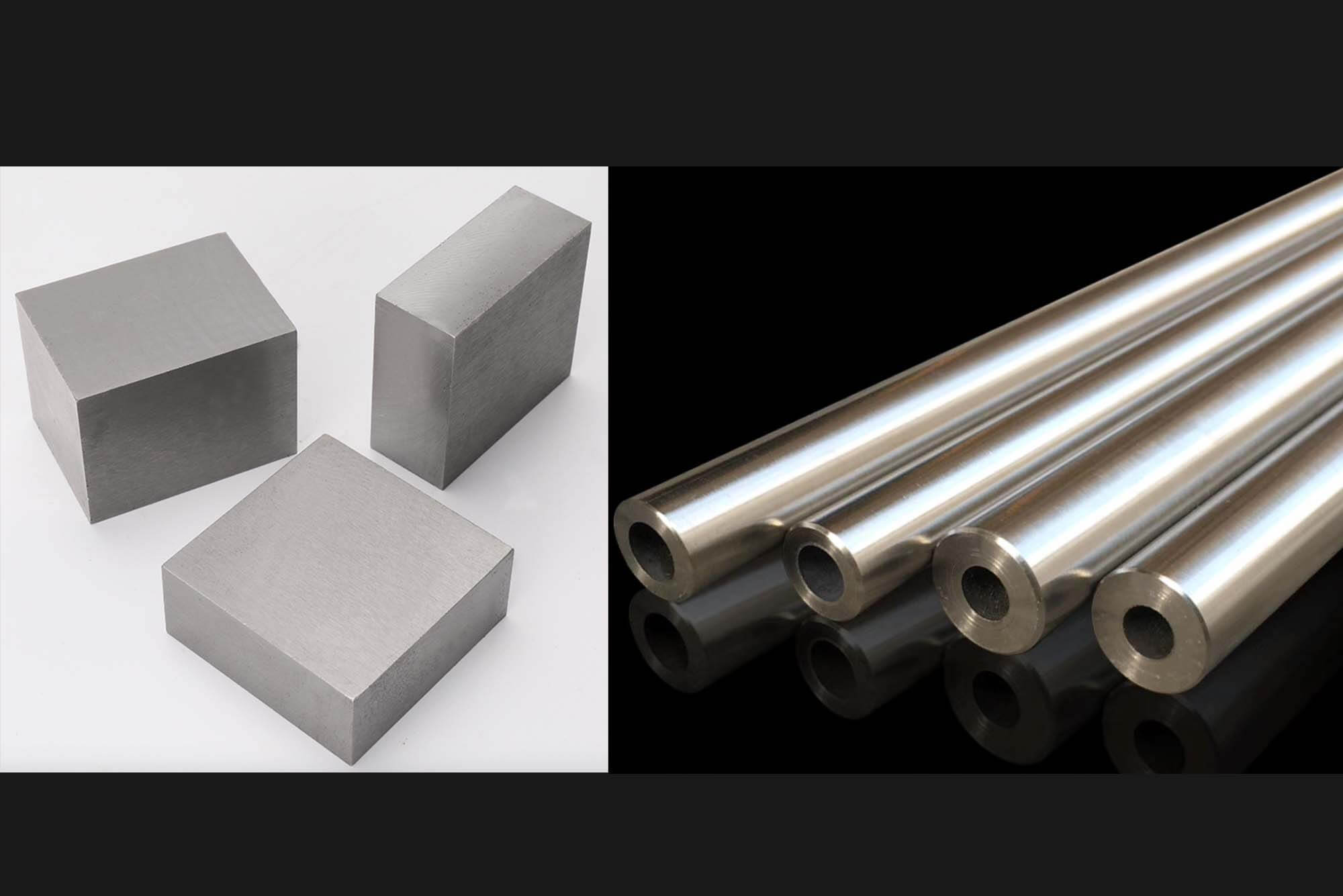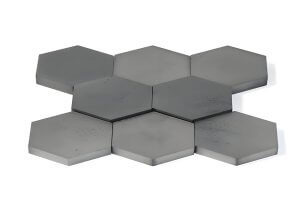What Is Iron and Steel? Their Definitions and Basic Properties
Iron and steel are two materials that have shaped human civilization for centuries. Iron, a chemical element (Fe), is one of the most abundant metals on Earth and has been used since ancient times. Steel, on the other hand, is an alloy primarily composed of iron and carbon, often enhanced with other elements like chromium, nickel, or manganese to improve specific properties.
Iron is relatively soft and malleable in its pure state, which makes it easy to work with but unsuitable for applications requiring high strength. By contrast, steel’s combination of strength, ductility, and versatility arises from its carefully controlled chemical composition. Historically, iron was a cornerstone material in ancient tools, weapons, and structures. With industrial advancements, steel replaced iron in many applications, revolutionizing industries due to its superior properties.
Understanding the distinction between iron and steel is essential because their properties determine their applications. While iron is foundational, steel represents innovation. This “Iron vs Steel” comparison is fundamental in industries ranging from construction to automotive manufacturing.
Here’s a detailed table comparing their basic properties:
| Property | Iron | Steel |
|---|---|---|
| Density (g/cm³) | 7.86 | 7.8 |
| Melting Point (°C) | ~1,538 | ~1,370–1,510 |
| Tensile Strength | Moderate | High |
| Corrosion Resistance | Low | Variable (depending on alloy) |
| Cost | Lower | Higher |
| Historical Use | Ancient tools, weapons | Modern construction, industry |
When comparing “Iron vs Steel,” one must consider not only their properties but also their long-term viability. This foundation sets the stage for exploring deeper aspects of their use cases and performance.
Iron vs Steel: Comparing Strength, Hardness, and Corrosion Resistance
The debate of “Iron vs Steel” often centers on their mechanical properties. These properties are critical in determining their suitability for different applications, whether in construction, manufacturing, or specialized machinery.
- Strength: Steel’s superior tensile strength stems from its controlled carbon content and potential alloying with elements like vanadium and molybdenum. High-carbon steels, for instance, are preferred in tools that require extreme durability, whereas mild steel finds widespread use in construction due to its balance of strength and malleability. Iron, while less strong, can still serve adequately in applications requiring compressive strength, such as columns and heavy foundations.
- Hardness: Cast iron, a common iron variant, offers excellent hardness but is inherently brittle. Steel, especially alloyed varieties, provides a more versatile hardness profile, making it ideal for applications where toughness and resistance to deformation are essential. This hardness comparison highlights why steel is often the material of choice for tools and automotive components.
- Corrosion Resistance: Pure iron rusts rapidly in moist environments, a limitation that has historically restricted its applications. Steel’s resistance varies based on composition; stainless steel, containing at least 10.5% chromium, forms a passive oxide layer that prevents corrosion. This makes stainless steel indispensable in industries like marine engineering and chemical processing.
To clarify these comparisons, here is a detailed table:
| Material Type | Tensile Strength (MPa) | Hardness (Vickers) | Corrosion Resistance |
|---|---|---|---|
| Pure Iron | ~200 | ~30 | Low |
| Cast Iron | ~150–400 | ~150–200 | Low |
| Mild Steel | ~400—500 | ~120 | Moderate |
| Stainless Steel (304) | ~515–700 | ~200 | High |
| High-Carbon Steel | ~600–800 | ~250 | Moderate |
In my experience, understanding these “Iron vs Steel” characteristics helps manufacturers and designers make informed material choices. For example, a client once required corrosion-resistant outdoor machinery parts, leading us to select stainless steel despite its higher cost, ensuring long-term performance and durability.
Real-World Applications: Where Does Iron Shine? Where Does Steel Dominate?
The “Iron vs Steel” debate is also deeply influenced by real-world applications. Each material excels in specific industries, leveraging its unique properties to meet functional demands.
- Iron Applications:
- Construction: Cast iron’s ability to handle compression loads makes it ideal for components like columns, pipes, and manhole covers. Its aesthetic appeal also lends itself to decorative architecture, often found in historic structures.
- Machinery Components: Its wear resistance and vibration-dampening properties make cast iron a preferred choice for engine blocks and heavy-duty machinery bases. Iron’s durability in these roles underscores its continued relevance.
- Historical Artifacts: Wrought iron’s malleability and corrosion resistance ensured its popularity in gates, railings, and structural reinforcements for centuries. Even today, it’s valued for its ornamental applications.
- Steel Applications:
- Infrastructure: Steel’s unmatched strength-to-weight ratio makes it indispensable in bridges, skyscrapers, and railways. For instance, modern urban landscapes heavily depend on steel frameworks.
- Automotive Industry: The shift to lightweight steel in car manufacturing has improved fuel efficiency and safety without compromising durability. Steel’s adaptability also supports precision engineering in critical components like gears and suspension systems.
- Aerospace: Advanced steel alloys, such as maraging steel, play crucial roles in components requiring exceptional strength and toughness. This includes landing gear and jet engine parts.
Each of these examples highlights the practical implications of the “Iron vs Steel” choice. I recall working on a project involving a custom steel bridge component. Opting for high-tensile steel over cast iron ensured the structure met rigorous safety and durability standards.
The Cost Factor: Iron vs Steel Pricing and Lifecycle
Cost is another pivotal aspect in the “Iron vs Steel” discussion. While iron is often cheaper upfront, steel’s long-term value often makes it the better investment in demanding applications.
| Cost Analysis | Iron | Steel |
|---|---|---|
| Raw Material Cost (USD/ton) | ~$500 | ~$700–1,500 |
| Processing Cost | Low | Moderate to High |
| Lifespan in Use | Short (prone to rust) | Long (corrosion-resistant types) |
| Total Lifecycle Cost | Moderate | Low (due to durability) |
I’ve encountered scenarios where clients initially preferred iron due to its lower cost but shifted to steel upon realizing the long-term maintenance and replacement expenses. For instance, mild steel’s enhanced durability over cast iron in industrial equipment saved significant costs over a decade.
Environmental Sustainability: The Eco-Impact of Iron and Steel
The “Iron vs Steel” comparison extends to environmental considerations. Both materials have their unique profiles in terms of sustainability.
- Iron: Its abundance and straightforward recycling process make it a sustainable choice. However, traditional extraction methods generate significant carbon emissions, posing environmental challenges.
- Steel: Steel recycling, especially in electric arc furnaces, requires less energy and reduces waste. Stainless steel’s long lifespan further enhances its eco-credentials.
To illustrate these points, consider the following table:
| Sustainability Metric | Iron | Steel |
|---|---|---|
| Recyclability | High (easy to recycle) | Very High |
| Energy Use (production) | High | Moderate |
| Carbon Emissions | High | Moderate to Low |
| Longevity | Moderate | High |
Decision-Making Guide: Choosing Between Iron and Steel
When navigating the “Iron vs Steel” decision, specific criteria can guide material selection:
- When to Choose Iron:
- Budget constraints are critical.
- Complex shapes requiring casting are necessary.
- Applications demand vibration resistance or wear durability.
- When to Choose Steel:
- Structural integrity and safety are paramount.
- Corrosion resistance or precise machining is required.
- Longevity outweighs upfront material costs.
Iron and Steel in CNC Machining
CNC machining has revolutionized the application of both iron and steel. Here are key observations:
- Machinability: Cast iron’s lower hardness makes it easier to machine but prone to chipping. High-carbon steel, though harder to machine, yields exceptional precision and surface quality.
- Tool Wear: Machining steel, especially harder alloys, increases tool wear. Advanced coatings, such as titanium nitride, can mitigate this issue.
- Cost Implications: While iron is cheaper to machine, steel’s precision and reliability often justify the higher tooling and operational costs.
| CNC Machining Comparison | Iron | Steel |
|---|---|---|
| Machinability | High (easy to machine) | Moderate to Low |
| Tool Wear | Low to Moderate | High |
| Finished Surface Quality | Rougher | Smoother |
| Application Flexibility | Limited | Broad |
8. FAQ: Common Questions About Iron and Steel
- Is steel always stronger than iron?
Generally, yes. Steel’s alloying elements enhance its strength compared to pure iron. - Why is iron cheaper than steel?
Iron requires fewer processing steps and lower energy inputs than steel. - Can cast iron rust?
Yes, cast iron rusts when exposed to moisture unless coated or treated. - What is the most corrosion-resistant type of steel?
tainless steel, particularly grades like 316, offers excellent corrosion resistance. - Which material is better for CNC machining?
It depends on the application. Steel offers precision, while iron is easier to machine. - Why is steel preferred in construction?
Its strength, flexibility, and resistance to environmental stresses make it ideal. - Is steel recyclable?
Absolutely. Steel is one of the most recycled materials globally. - What are the environmental impacts of steel production?
Steel production can emit significant CO2, but recycling steel reduces this footprint. - Can iron be used in modern construction?
Yes, especially cast iron for specific structural or decorative elements. - How does alloying affect steel properties?
Alloying enhances properties like strength, corrosion resistance, and machinability. - What are the challenges of machining cast iron?
Its brittleness can lead to chipping, requiring careful machining techniques. - Which is more suitable for high-temperature applications?
Steel, especially heat-resistant alloys, outperforms iron in high-temperature conditions. - What industries rely heavily on iron?
Iron is crucial in manufacturing heavy machinery, automotive components, and pipelines. - Are there eco-friendly steel production methods?
Yes, methods like electric arc furnace (EAF) technology use recycled materials and less energy. - How does the cost of maintenance compare between iron and steel?
Steel generally has lower maintenance costs due to its durability and corrosion resistance.
Other Articles You Might Enjoy
- Ductile Iron Applications Enhanced by CNC Machining Techniques
Why CNC Machining is Key for Ductile Iron Ductile iron, also known as spheroidal graphite iron, is a material renowned for its strength, ductility, and impact resistance. Its unique composition…
- The Perfect Synergy Between Chrome Plating Cast Iron and CNC Machining
In the realm of industrial manufacturing, the integration of CNC machining and chrome plating on cast iron components stands as a pivotal advancement, driving quality, precision, and durability to new…
- Alloy steel vs stainless steel
Introduction to Alloy Steel and Stainless Steel An alloy is a combination of metals or a metal mixed with one or more elements, engineered to enhance material properties such as…
- Comprehensive Guide to CNC Machining: Carbon Steel vs Stainless Steel
Choosing the right material for CNC machining is a crucial decision for any manufacturer or engineer. Two of the most commonly used materials in various industries are carbon steel and…
- low alloy steel vs stainless steel
Introduction to Metal Alloys Metal alloys consist of a mixture of metals or a metal and another element, engineered to enhance certain properties such as strength, ductility, corrosion resistance, or…
- The Art of Bead Blasting in CNC Machining(cast iron steel Astrid)
Bead blasting is an integral process in the world of CNC (Computer Numerical Control) machining – a manufacturing sector where precision, aesthetics and endurance are key to creating high-quality products.…






